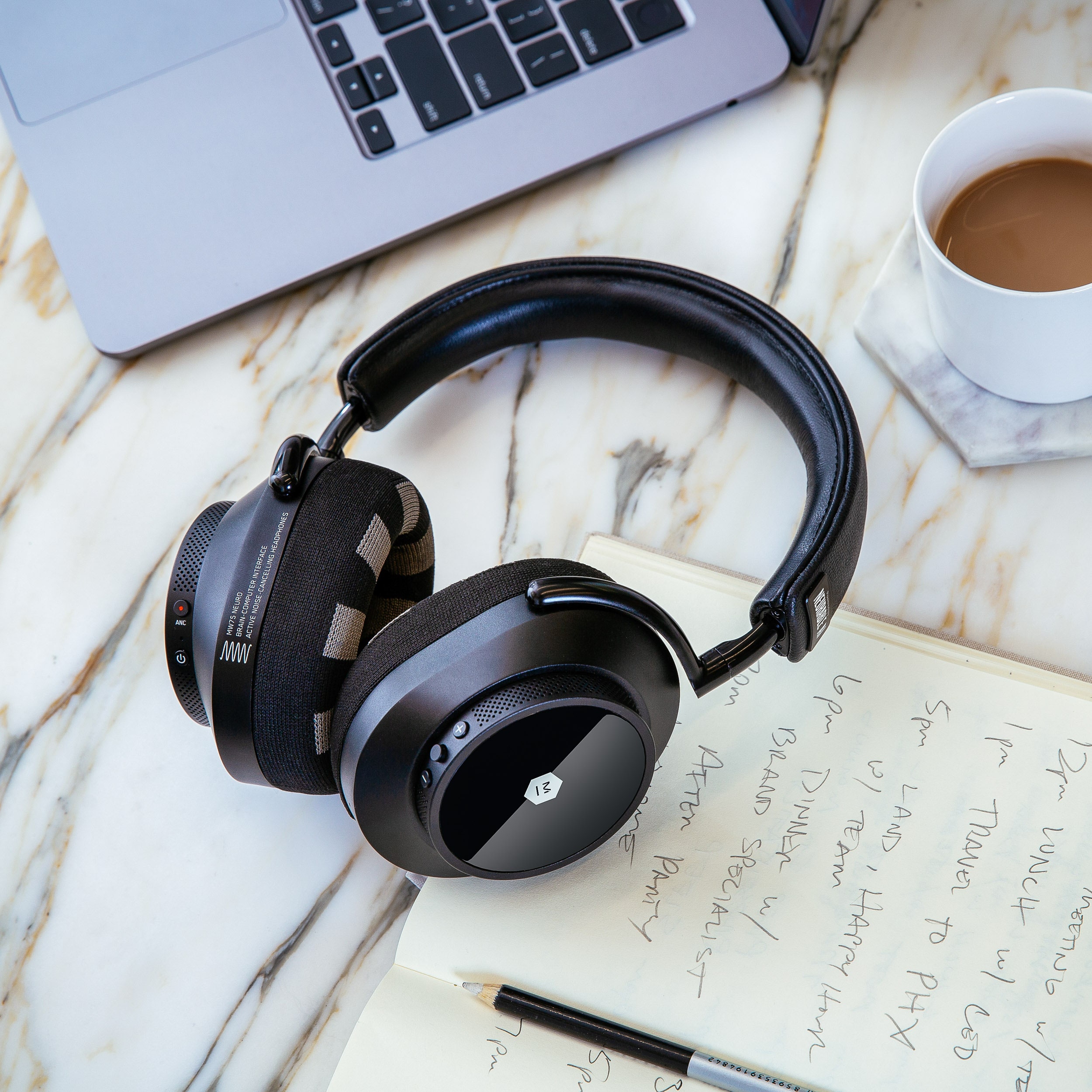Activity trackers have come a long way. No longer mere step-counters, they can monitor your heart rate, blood oxygen level, and skin temperature, and can even detect whether you suffer from sleep apnea. Now, there’s a new wearable for your brain—and I’ve been testing it out for the past two weeks.
Today, Boston-based company Neurable announced the launch of its smart headphones, dubbed the MW75 Neuro, which use electroencephalography, or EEG, and artificial intelligence to track the wearer’s focus levels by reading their brain waves. The device sends this data to a mobile app, with the goal of helping the user tweak their habits to improve their work routine. It’s available for preorder in the US for $699 and will ship this fall. Starting in spring 2025, the device will be available in Europe and the UK for €729 and ₤629, respectively.
“We’ve created an everyday wearable for tracking mental wellness and preventing burnout,” says Ramses Alcaide, CEO and cofounder of Neurable. “This is the ultimate wearable, and it tracks the most important organ in your body.”
Alcaide has been working on the technology since 2011, when he was completing his PhD at the University of Michigan’s Direct Brain Interface Laboratory. He founded Neurable in 2015 with fellow student Adam Molnar, now Neurable’s vice president of strategic partnerships. Considered a brain-computer interface, or BCI, the device is one of several consumer wearables coming onto the market that read and translate a person’s brain signals. (Last year, Apple filed a patent for AirPods with embedded EEG sensors.)
These devices differ from invasive BCIs, like the one Elon Musk’s Neuralink is developing, which use implants that are surgically placed in or on top of the brain. Noninvasive BCIs like Neurable’s collect brain data though the skin—usually with EEG—without requiring any kind of surgery.
EEG is widely used to study the brain’s electrical activity and to help diagnose certain conditions such as epilepsy, brain tumors, and sleep disorders. The technology dates back to the 1920s, when German psychiatrist Hans Berger recorded the first EEG from a teenage boy undergoing brain surgery.
Neurons in the brain communicate via rapid electrical impulses, and EEG uses conductive metal disks called electrodes to record that activity. Current EEG devices resemble swimming caps and are studded with dozens of electrodes. A special gel is typically applied to the scalp to improve signal quality. It’s not exactly the kind of headwear most people would want to wear in public.
Alcaide and Molnar wanted to design an EEG device that people could use outside hospitals and research labs—something people could wear in an office or coffee shop. “This technology is not going to be adopted noninvasively until it’s invisible,” Molnar told me back in March when we met up at SXSW in Austin.
Neurable went through several prototypes before settling on its current design, a pair of noise-canceling wireless headphones made by audio company Master & Dynamic with 12 EEG sensors in the earpads. Alcaide says the company’s sensors capture 80 to 90 percent of the signals that traditional EEG technology can. They can also play music, just like any other pair of headphones.





